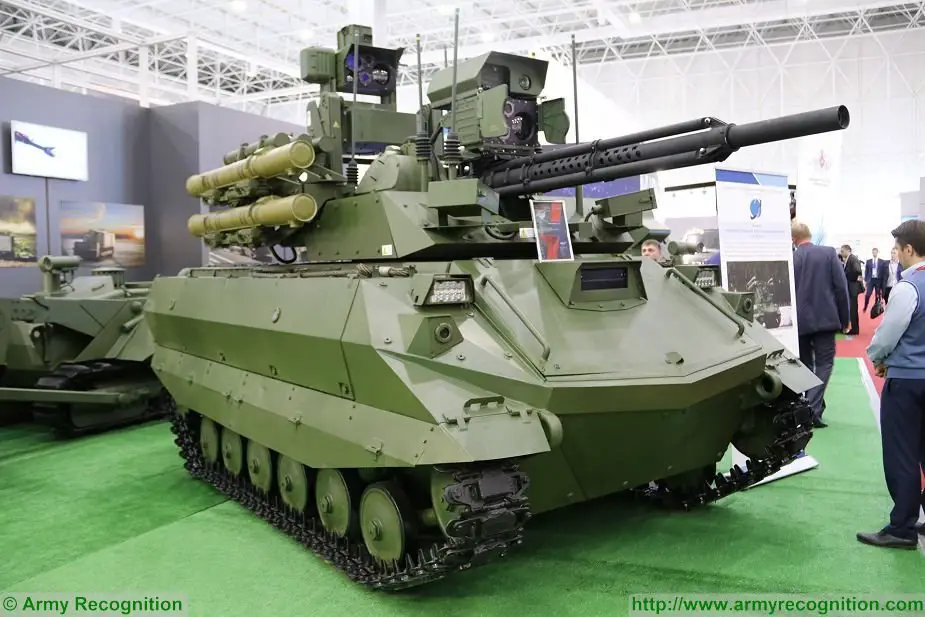Breaking news
Strong failures of Russian Uran-9 unmanned ground vehicle in Syria.
Bad score for the Uran-9 unmanned tank that couldn't operate as far away from its controllers as expected, had problems firing its 30mm gun, and couldn't fire while moving, amid other problems.

Russian-made Uran-9 unmanned ground combat vehicle at Army-2016 International Military Technical Forum, September 2016. (Picture source: Army Recognition)
The Uran-9 was unveiled in September 2016 and deployed to Syria in May 2017. It was claimed to be capable of operating up to 2.9 km away from its controller. But in Syria, it could only be operated from about 33 to 54 meters from its operators around high-rise buildings. The robot tank's controller also randomly lost control of it 17 times for up to one minute and two times for up to an hour and a half.
The Uran-9 is heavily armed with four 9M120-1 Ataka anti-tank guided missile launchers, six 93 mm-caliber rocket-propelled Shmel-M reactive flamethrowers, one 30-mm 2A72 automatic cannon, and one 7.62-mm coaxial machine gun. The 30-mm cannon delayed six times and even failed once, and it could only acquire targets up to about 2 km away, as opposed to the expected 6 km. Apparently, the tank's optical station faced multiple interferences on the ground and in the airspace in the surveillance sector. The unmanned tank even had problems with its chassis and suspension system and required repairs in the field.


























